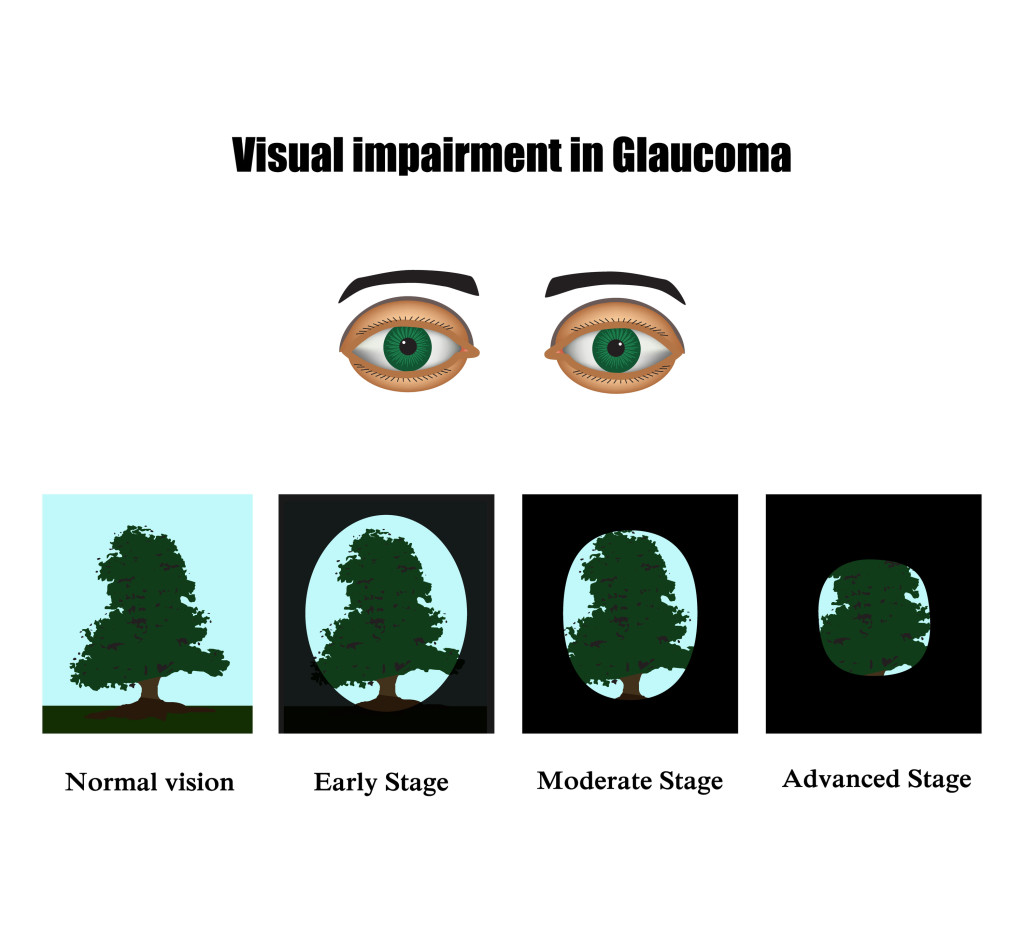
Glaucoma is a non-preventable, hereditary group of eye diseases that inflicts damage to the optic nerve and can cause a loss of vision and blindness. The optic nerve’s job is to send any images that we see to our brain. How does glaucoma damage the optic nerve? Well, typically, it is due to an elevated intraocular pressure, or IOP.
Glaucoma Screenings–Part of Comprehensive Eye Exam
At VisionFirst, we recommend that our patients come in for a comprehensive eye exam once a year, but patients over the age of 65 should see their eye doctor about every 6 months.
There are five tests that help in determining whether or not a person has glaucoma. Together, these tests evaluate the overall scope of your vision and help the doctor in making a proper diagnosis. The five tests are:
- Tonometry – checks your inner eye pressure
- Perimetry – checks your field of vision
- Ophthalmoscopy – checks the shape and color of your optic nerve
- Pachymetry – determines the cornea’s thickness
- Gonioscopy – checks the angle in the eye where the cornea and iris meet
At VisionFirst, all of these checks will be performed in a comprehensive eye exam.
Open Angle, Angle Closure, and Congenital Glaucoma
There are three different types of glaucoma: open angle, angle closure, and congenital.
Open angle glaucoma is considered the most common type, affecting approximately three million Americans. It forms when your eye’s drainage canal becomes clogged over time. The IOP increases because a certain amount of fluid cannot drain from the eye. The increased IOP causes reduced blood flow to the optic nerve’s most sensitive tissues. Eventually, fibers in the optic nerve will be destroyed, and you will lose side vision. In most instances, there are no early warning signs or symptoms. However, with regular eye exams, you can potentially detect the beginning stages and prevent loss of vision. Open angle glaucoma can be treated with eye drops and laser treatment.
Angle closure glaucoma is also called acute or narrow angle glaucoma. This type of glaucoma is rarer than open angle glaucoma and is different because the eye pressure goes up much faster. When this happens, your drainage canal is blocked or covered. Here at VisionFirst, we can test patients to see if they have an angle that is normal and wide or abnormal and narrow.
Surgery is needed to treat angle closure glaucoma in order to remove a small portion of the outer edge of the iris. This unblocks the drainage canal so that the fluid can drain out.
Congenital glaucoma occurs in children who are born with an eye defect that slows the drainage of fluid. Some general symptoms include light sensitivity, eyes that appear cloudy or foggy, and/or tearing. In small children, medicine is not recommended, but surgery tends to be effective and is the safest option.
Eye exams are helpful in detecting a variety of health problems and eye diseases. That’s why regular visits to the eye doctor—no matter your age—are so essential. The doctors at VisionFirst take great care in making sure your overall health is assessed and that you leave Looking, Feeling, and Seeing your best. Schedule an appointment today at one of our locations.






